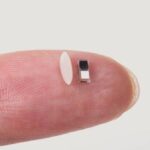Before I began writing this science and technology blog, I was working for a software developer with a suite of network management tools that could be used to integrate wide area networks. The conceptual model, called the Open Systems Interconnection (OSI) stack, divided networks into seven layers. The first layer was the physical. Subsequent layers dealt with data, networks, transport, sessions and presentation.
Working with a team of software engineers, I developed the systems architecture for the OSI’s physical layer and took this model to major telecommunication vendors, including Nortel Networks, Canada’s leading company in the field at the time.
My goal was an open architecture that could be populated by software and application programming interfaces (APIs) to create an interoperable global telecommunications network that integrated multiple hardware vendors and gave customers a seamless voice and data experience. This was, I hoped, to become a foundation for an integrated global multivendor telecommunications network. It took, however, until 2023 to get 21 leading telecommunications providers to agree on a common architecture that today is known as the GSMA Open Gateway.
Although satellite telecommunications existed in the 1990s when I was working on a common architecture for the OSI physical layer, it didn’t enter the big picture. Satellite telecommunication providers were handling only a small amount of voice and data. The satellites were either Low Earth Orbit (LEO) or geostationary telecommunications. The first LEO satellite was Telstar 1, launched in July 1962, a joint venture between AT&T and NASA.
Telstar provided a telecommunications link between ground stations in the U.S., U.K. and France. It was followed by Syncom 3 in 1964, and then the first Intelsat satellite to be put into geosynchronous orbit in 1965. Intelsat is credited with building the first global network for satellite communications. Today, it operates 57 geostationary-orbiting satellites that primarily provide television and video relay, not voice and Internet access.
The 21st century, however, has addressed voice and data with a non-terrestrial network of LEO satellites from SpaceX, called Starlink. Starlink launched its first 60 satellites in 2019. Today, a mesh network of 7,135 LEO satellites represents a telecommunications paradigm shift.
Tristan Wood is the founder of Livewire Digital, a U.K.-based pioneer in the business of building internetwork connectivity. He sees hybrid networking as the future of telecommunications, a bridging of the terrestrial and satellite worlds.
In a March 18, 2025, posting on the Satellite Evolution website, he noted:
“Existing solutions like cellular and fibre simply cannot reach vast tracts of the globe, especially in remote locations, where access to digital health and other vital services could transform lives for those living in such areas.”
Wood continued.
“No single network service can address the exponential demand for seamless connectivity, especially on the move. Hence, the rapid drive towards hybrid connectivity solutions that can use multiple networks in unison. The advanced world is beginning to realize the potential of hybrid connectivity, as evidenced by the take-up by a wide range of satellite and terrestrial network providers.”
What is hybrid connectivity? It is the integration of all existing and yet-to-be network technologies and infrastructure. Today, we are talking about wired (landline), wireless (cellular and mobile) and satellite. We are talking about hardware and software tools that produce seamless communications across these multiple delivery tools with hybrid connectivity, maximizing the strengths of each to ensure continuous connectivity even when one segment fails.
Current hybrid networks combine fibre-optic broadband, cellular and satellite. They cover Earth’s most remote and hard-to-reach places. They feature automatic failover meaning if the fibre disconnects, the cellular takes over, and if the cellular fails, then the satellites keep the communications and links going.
Telecommunication companies talk about achieving 5-9s, meaning service that is 99.999% always on. That is equivalent to a downtime of no more than 2 minutes per year. Hybrid networks are designed to achieve 5-9s even in places as remote as the high Arctic and Antarctica.
Woods believes the global telecommunications community needs to embrace hybrid connectivity in a world where, by 2030, 7.5 billion will access the Internet, representing 90% of humanity. That number is expected to grow to 10 billion by 2050. With hybrid connectivity, regardless of locality, it will ensure uninterrupted and reliable communications to create almost universal digital literacy and a levelling of the playing field for those living in Earth’s most remote places. The latter will experience high-speed connectivity just like those in big cities. It represents an enormous paradigm shift that is being made possible by advances in technology that I could only dream about back in 1999, and which is now becoming a reality in the third decade of the 21st century.









